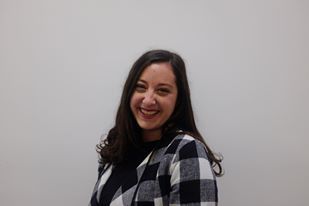Among the provisions in the $900 billion historic pandemic relief bill is billions of dollars in rental assistance, which will provide much-needed support to the nearly 20 million Americans who are behind on rent (equal to the entire population of the state of Florida). There is a federal moratorium on evictions until the end of January 2021 (which could be extended), but tenants will still owe their landlords their rent, which could plummet them into debt.
It's estimated that Americans owe about $70 billion in back rent. Rental assistance can help. If you’re a tenant who needs help paying your rent, or a landlord whose tenants could use support, here’s what you need to know about the stimulus rent assistance and how to access it.
How much funding is available?
In total, the bill provides $25 billion in rental assistance; it isn't enough to close the gap on what renters owe, but it will alleviate some of the burden. The funds will be distributed to states who can provide them to their residents through local agencies and organizations. Most of the funding will go to direct aid and rent coverage, but services like mediation between landlords and tenants and case management will also be available.
Households will be able to receive up to 12 months of rental assistance in the first round of funding, and if funds are available states can provide an additional 3 months for a total of 15 months of help. Assistance can be used to cover rent, utilities, and other housing expenses.
How do renters apply?
Renters will be able to apply for assistance through local entities and community organizations selected by each state. Once the renters’ application is approved, funds will be sent to their landlord. If for some reason the renters’ landlord declines to receive the funds from the organization, they will be given to the renters directly so that they can pay their rent themselves.
Landlords will also be able to apply on behalf of their tenants, but they will have to document that they obtained their renters’ consent first. Landlords are allowed to help renters with their applications for assistance with their permission.
The funds haven’t reached states yet, and states haven’t announced which organizations will be distributing their funds. However, when the bill passed in the last week of December lawmakers planned on distributing the $25 billion by the end of January, when the current eviction moratorium expires. If you are a renter or landlord interested in assistance, check your city and state coronavirus relief websites and press releases for the latest information.
Who is eligible for the rental assistance?
Not all renters are eligible for assistance. There are three qualifications you need to meet to receive assistance:
- Your household income must be less than 80% of your area’s median income. You can check your area’s median income with this tool from the Department of Housing and Urban Development by choosing your state and county from the dropdown menu, then scroll to the bottom of the page to see the estimate of your area’s median income. Multiply that number by 0.8, and you will have the income threshold you need to meet or fall below to qualify for assistance.
- Your household must demonstrate a risk of homelessness or housing instability for one or more members of the household, such as a past due utility or rent bill.
- Your household must have one or more household members who qualify for unemployment benefits or who have experienced financial hardship in the pandemic. If you are receiving unemployment benefits you would qualify, or if your income has dropped.
To qualify for assistance, your household must meet all three requirements. Just one is not enough. Certain households will be prioritized for assistance: those with household incomes that are 50% or less of the area median income, and those who have members who have been unemployed for 90 days or more.
How much will each state get?
The $25 billion will not be divided evenly over U.S. states and territories. Each state will get an allocation by population, with a $200 million minimum allocation. U.S. territories will share $400 million. Cities of 200,000 or more can request to receive their allocation from the federal government directly, rather than waiting for their state to distribute it to them (and many likely will). To find out how much your state will be eligible for, you can check this graphic from Novogradac.
As rental assistance funds begin to be distributed throughout the country, we will cover updates on the Skip blog and on our app, which you can download on the App Store and on Google Play (under "Hello Skip").


